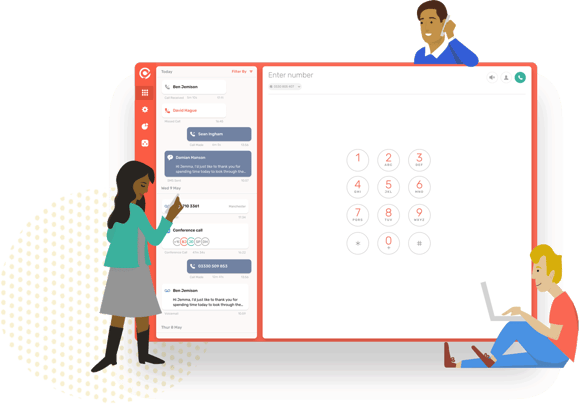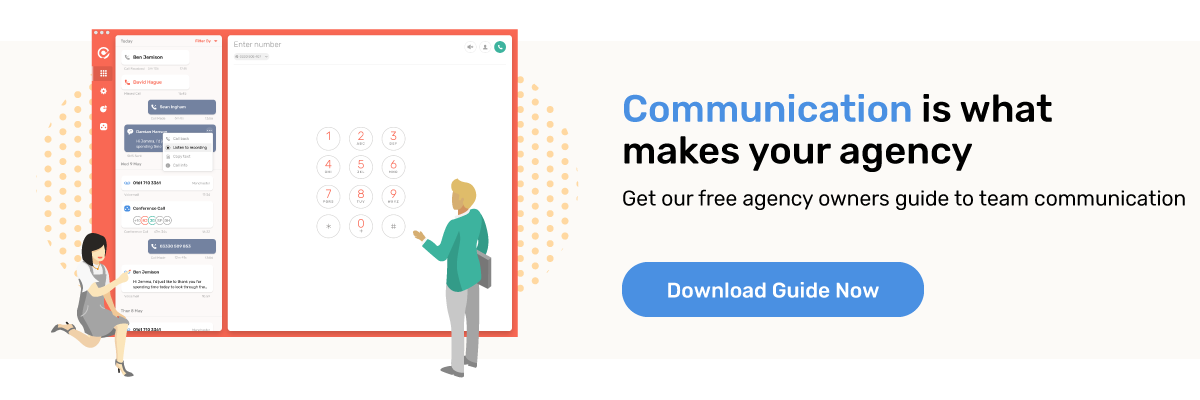The secret to a company’s success isn’t just hiring the right people and putting them in seats, it’s also working to keep them there. That’s why internal communication is so important, more so now than ever. Remote working is all we’ve known for the past year, and with the gradual return to the office, and a more flexible or hybrid approach to working, good internal communication is vital.

Your employees are likely to be your biggest asset so it’s important to make sure that you invest in the right team. Internal communication is not as easy to measure as external communication efforts, but there are some things you could look out for. By using key performance indicators you can drive performance and make sure you’re getting the most out of your employees.
Here are five employee KPI examples that will help your company grow its internal communication strategy.
How Engaged Your Employees are
A good place to start is to conduct an employee engagement study to understand your company’s current state. Remember to ask open questions and have a clear, extended scale (e.g. 1-10).
Some examples of communication-related questions you could ask are:
-
How well do you think your supervisor/line manager communicates with you?
-
How comfortable are you with asking your other team members (peers and supervisors) for help?
-
How aligned do you think your personal goals are with the company?
-
How well do you think you understand the company’s goals?
-
How much do you agree with the company’s mission?
After you’ve established a benchmark, set goals for increasing these rates. This will vary from question to question and company to company. Then, conduct the study regularly, such as weekly or monthly, and analyse the results to track progress.
Adoption Rates for New Tools and Technology
Say you’ve just implemented a new communication tool that will help make internal comms much more efficient. Do you know if everyone’s making the most of this tool? What if only a handful of your company has adopted it?
If you’re communicating properly and effectively, your employees should know about all of your new initiatives and understand their value enough to participate. A good benchmark to aim for is if at least 50 percent of your employees join in.
In our blog, The Best Remote Working Tools for your Tech Stack, we highlight some of the best tools to help improve productivity and communication within your business. Making sure you implement tools that are beneficial to your employees is key to making sure the uptake is as high as it can be.
Time Taken to Respond to Clients
Fast and efficient communication is very important if you want to maintain a healthy relationship with your clients. But you don’t want to reply instantly and give an inadequate, pointless response or take too long and annoy your client because they’re expecting a reply, pronto. So, how long is too long?
Research has found that 50 percent of people send responses within an hour. Though this varies according to age (younger people reply faster) and device (mobile users reply faster than laptop users), it’s clear that people expect swift responses.
A good benchmark for your employees to aim for is an hour as 89 percent of people expect an email response in this time.
Number of Overdue Tasks
An obvious sign that your company communication is struggling is a high number of overdue tasks. Many overdue tasks can be put down to a lack of good communication along the way.
Is the importance of the deadline well-known? Or has the brief for the task been poorly expressed? Likewise, is the person completing the task able to flag that they need assistance?
If one or all of these things are failing, then tasks will become overdue. Monitoring the number of tasks that end up overdue can prompt you to investigate further.
Ideally, you should have the overdue tasks number down to zero by the end of the project. But keep in mind that you may encounter some obstacles along the way that can cause delays and not all can be solved immediately or by your company alone. For instance, if it’s down to the client not responding, there’s little you can do but keep persisting (politely, of course).
Low Staff Turnover Rate
Replacing staff costs time, money, and valuable attention. Monitoring your team's average time with the company and turnover rate per year is a good way of keeping an eye on your agency comms.
If people are staying at your agency, it means things are going well. They can see a future with you, they are working towards clear goals and it's a sign everyone is on the same page.
And While You’re Focusing on Employee KPIs, Don’t Forget About Using the Right Comms Tech…
When implemented, employee KPIs will help you monitor and then improve comms internally. It's all about building for growth, getting your processes sharpened ready for your next round of hiring. But, while you’re doing that, don’t forget about using the right technology for communication.
Whether you're a startup, a growing business, or more established, you’ll need a future-proofed business telephone system. Your phone system is integral to the overall productivity of your company, so whether you’re contacting clients and customers or keeping remote workers in the loop, the right business phone system will grow with your company’s needs.
Companies are changing over to new tech, like cloud-based phone systems which allow staff to make and receive calls wherever they are as long as they have an internet connection.
Interested in Learning More About Communication Tools and How it Can Help Your Company Grow?
We’ve got a handy guide that tells you everything any agency owner needs to know about team communication. From internal growth to making clients happy, download it below to learn more.
.png)



